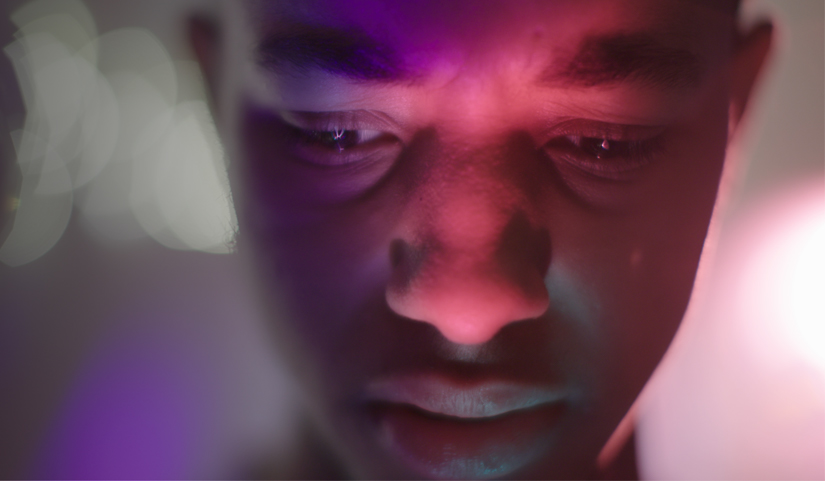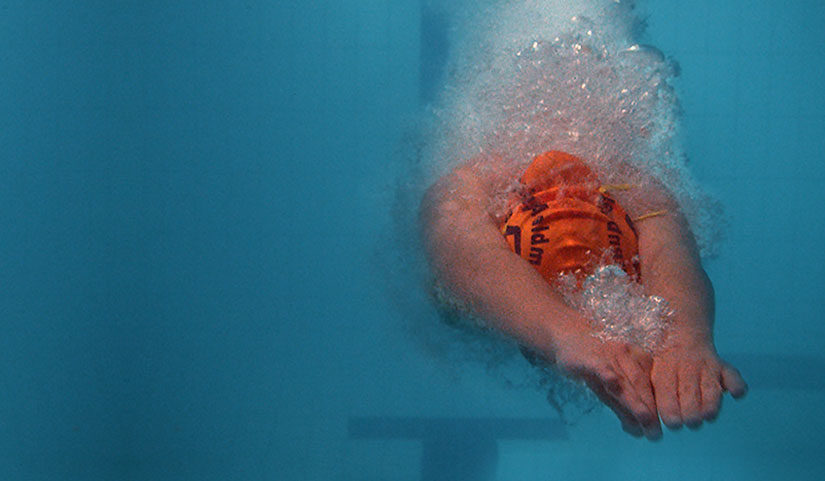The Brief
How can we create an educational experience to support Diageo’s global ambition to change the attitudes of five million people towards drink-driving by 2030?
The Solution
A simple but authentic, immersive, compelling learning experience that allows users to have interactive conversations with real drink-drivers, and gain genuine insights into the life-changing consequences of drink-driving.
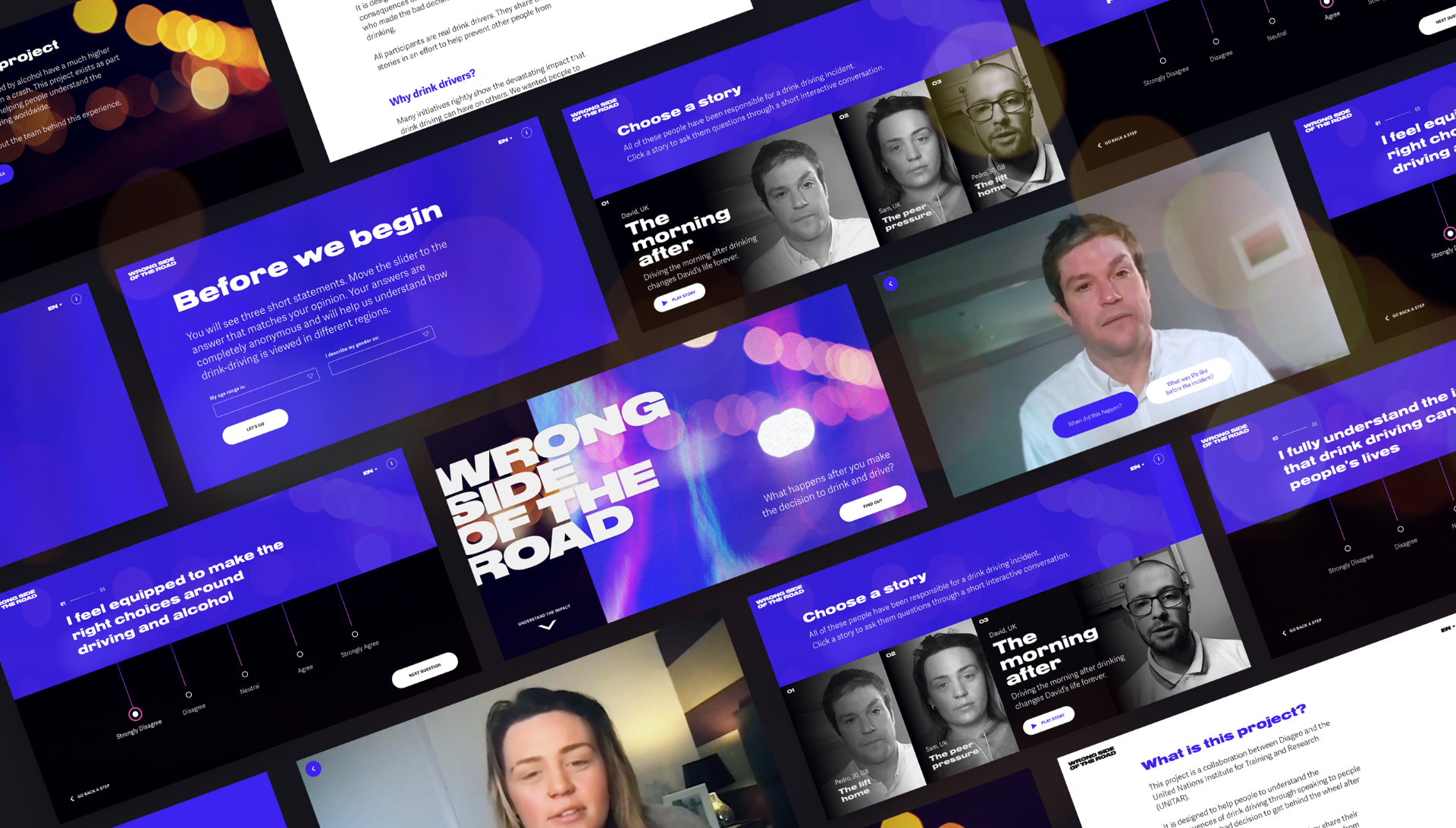
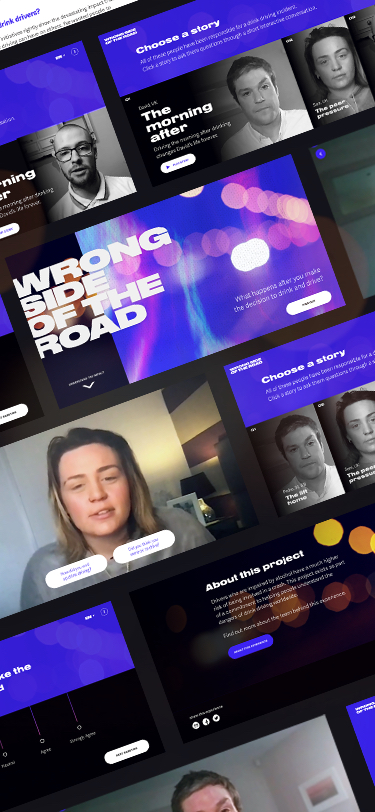
Background
OUR APPROACH
Diageo – in partnership with United Nations Institute for Training and Research (UNITAR) – wanted to create a learning experience that would communicate the effects of drink-driving, with a focus on driving attitudinal change across several global markets, for a predominantly 18-35-year-old demographic.
The aim of this initiative is to reduce the number of people who believe drink-driving is socially acceptable, and who would consider driving impaired, while also informing users of the dangers of drink-driving, and the impact that alcohol has on the body.
We had to get to the root of the issue – so, we asked a lot of questions and heavily researched our intended demographic across the various markets to understand the reasons that they drink and drive.
These discussions and this extensive research underpinned our strategy for a learning experience that would resonate with this audience.
Our conclusion?
Our creative approach needed to stigmatise negative behaviours and effectively communicate the full effects of alcohol on the body so that users moved from a mindset of, “Just one drink can’t hurt – everyone does it” to, “Drink-driving is a terrible thing to do! Alcohol affects the body, even in small doses”.
THE SOLUTION
We built a standalone website that features first-hand drink-drive stories, and interacts with Diageo’s existing DRINKIQ site, which aims to raise the ‘collective drink IQ’ by allowing users to choose which questions they’d like to ask a person with lived drink-drive experience.
There is also a brief check-in survey to document a user’s knowledge of drink-driving before they begin; users are asked the same questions after watching these films to measure how their knowledge and understanding has changed through engaging with the personal drink-driving stories.
Contemporary, bold, impactful typesetting sits alongside ambient footage, which teases users as to the mood of the films. The design is stripped back as much as possible so not to detract from the honesty and power of these stories. To this end, we kept the glitches in the recordings to reflect the unpolished nature of the stories themselves. The simple question-asking mechanic, which allows users to put questions to the drink-drivers, speaks to this too, and keeps the experience moving along in an organic way.
We believed that filming interviewees at home, where they can feel most comfortable, was crucial, and doing so via video call, a sustainable way to capture these personal stories from around the world.
The stories themselves are presented as if the user is having a direct conversation with them. This approach is at the heart of the impact of this interactive experience. It’s a sense of unfettered access to something that you wouldn’t normally discuss in everyday life.
This is a global initiative, spanning several markets around the world, with the experience being adapted to each market so that the drink-drive stories resonate on a cultural level with each country. In time, a user will be able to click through every drink-drive story, offering a global perspective on tackling drink-driving.
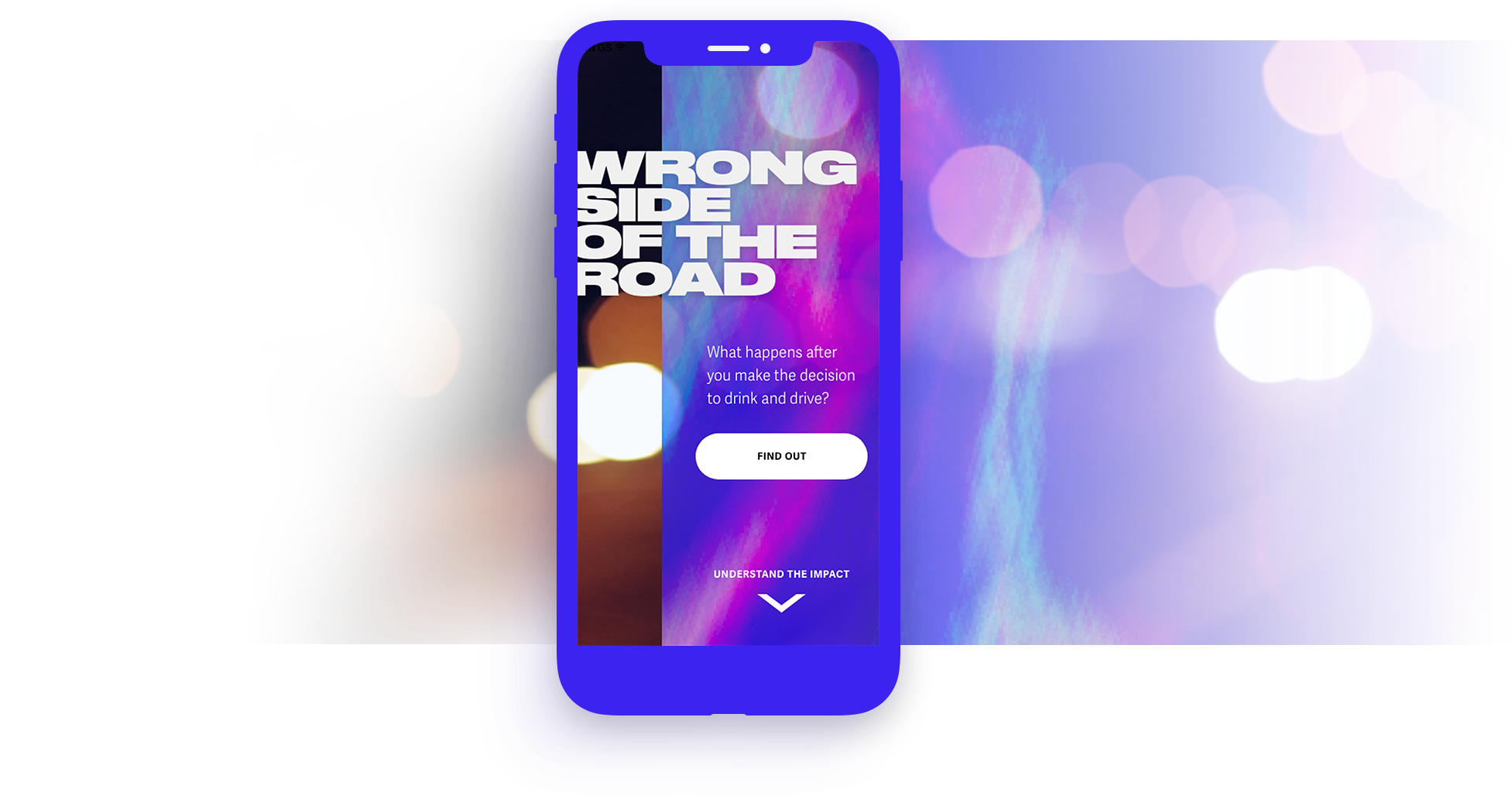
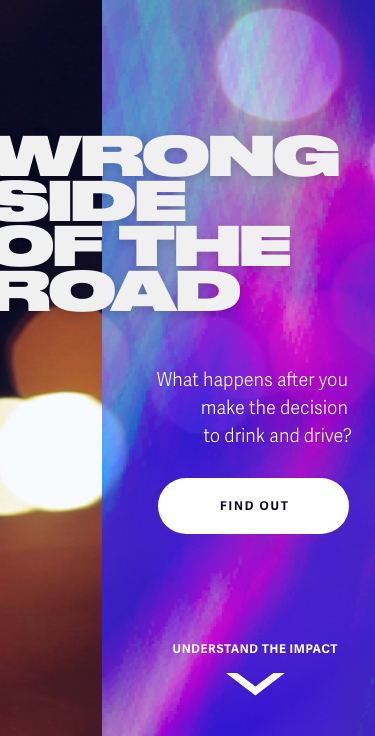
THE CHALLENGES
The biggest challenge for this project was presenting first-hand accounts of life-changing experiences that cover a taboo subject in an authentic, sensitive fashion. This is no mean feat.
Striking the right tone was imperative – it’s something that sets this project apart. We’ve found that drink-driving is often covered in a sensationalist manner. This is something that we wanted to avoid. After all, these stories are about people who made poor decisions but who are not innately bad – they’re human.
People make mistakes; they can act out and regret their actions. The people featured in these stories are no different; they have been gracious enough to share their stories to raise awareness, and needed to be treated with understanding without judgement, which was a priority of ours throughout the process.
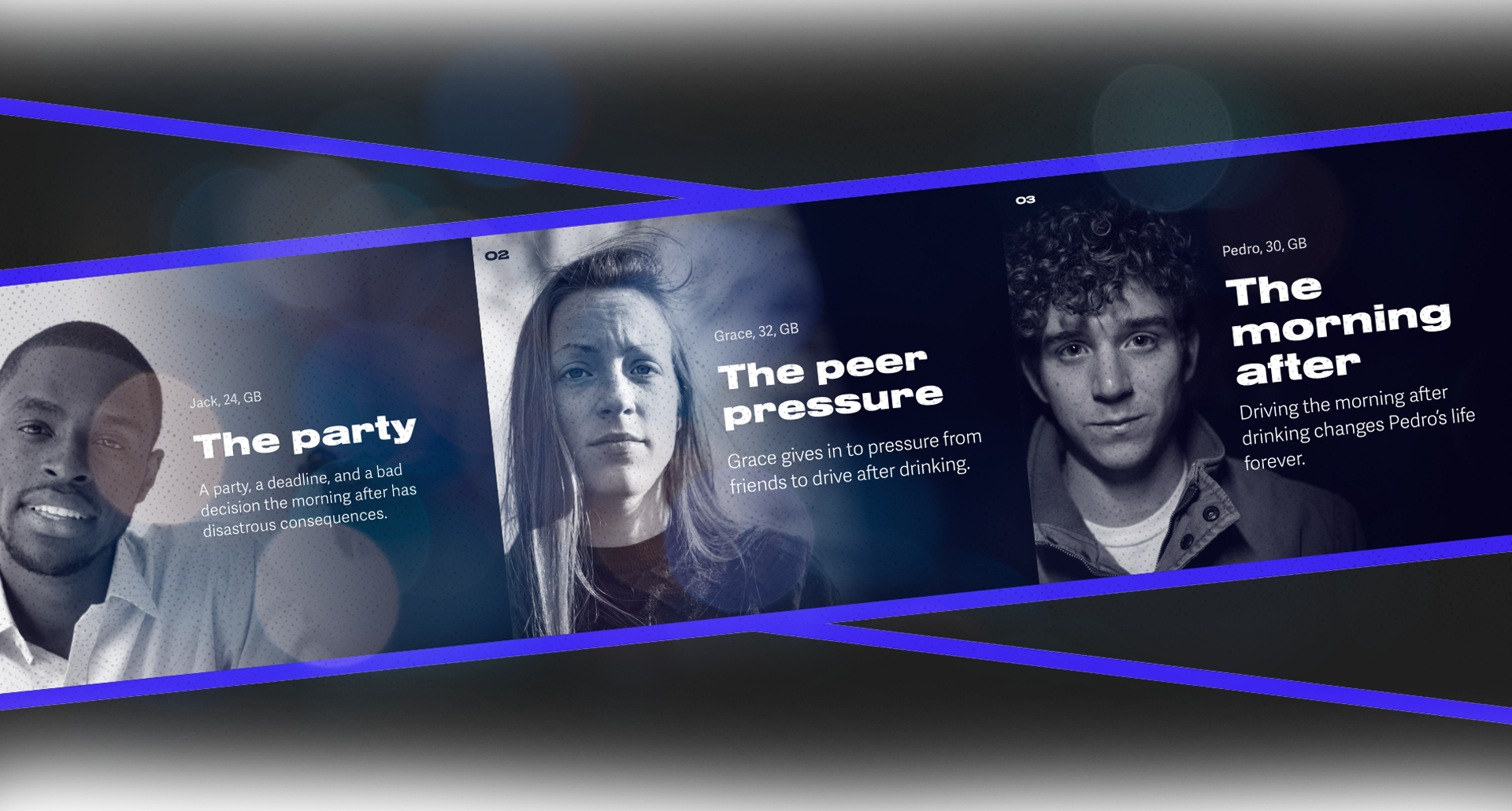

In year one
Over 550,000 people reached across the world, through offline, online and incentivised completions.
85% of surveyed people show attitudinal change towards drink driving.
133% increase over their 2022 financial year targets.
